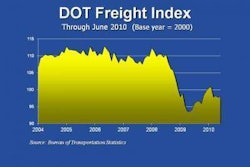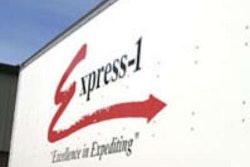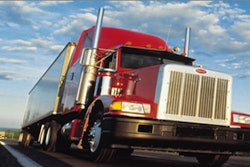Split-second analysis

Surviving the recession took extreme focus and discipline to keep costs in line with sinking revenues. Now that you’ve regained some pricing power, the time has come to position yourself for long-term profitability.
Not so fast. Suddenly, revenue in one of your most important lanes evaporates when a large competitor needs the cash flow and slashes its rates. Other sectors of your business shed profits because assets lose productivity or some lanes no longer fit your operational design.
If nothing else, the recession was proof that nothing can be taken for granted. Knowing your costs and profits for every movement every day is more critical than ever. On a macro level, many fleets are accustomed to using revenue-per-mile and revenue-per-day calculations to guide their decisions. At a minimum, fleet managers should know the revenues their daily activities must produce to cover the company’s operating costs and what level of productivity to expect from each driver and tractor under their control.
The problem is that most revenue measurements only use “loaded miles.” As such, they ignore several important factors. When analyzing a lane, it is easy to ignore the distance and time it takes to get to the origin and the time a driver sits between load assignments – the “dwell” time.
That’s why analyzing revenue at the trip level is essential. Cost and profitability analysis software gives fleets instant visibility to net revenues for outbound and inbound dispatches and all segments in between by accounting for all loaded and empty miles.
A bigger challenge than analyzing revenue is nailing down your true costs given the variations in fuel prices, wages and many other expenses. Also, many variable costs will differ by customer due to factors such as deadhead miles, appointment times, toll costs, freight density and layovers.
Software systems that use integrated financial and operational databases can provide fleet managers with live cost and profitability data instead of relying on outdated assumptions and averages.
Revenue should be analyzed at the trip level.
McLeod Software offers a Profitability Analysis Module for its LoadMaster enterprisewide software for truckload and private fleet carriers. Users can establish their own cost models, and the system automatically pulls in direct cost information for each movement and order. Examples of direct costs include the settlement costs paid to a driver and fuel costs by tractor.
The module also can apply indirect costs from the general ledger such as a per-mile charge for insurance. Costs that are specific to a customer, such as a spotting service, also can be included. Fleets can analyze their operating ratio (OR) by commodity, customer, day of the week, etc. – down to the trip and lane level.
TMW Systems offers an advanced analysis product called IDSC Netwise that integrates with leading dispatch systems to automatically capture the data it uses to compute the yield of loads that have been moved and those being evaluated. The yield for a single load is determined from a function of four main variables – revenue, variable cost, time and network balance or flow.
Last year, TMW Systems introduced a lightweight version of its Netwise system called Freight Analyst. The Web-based system integrates with dispatch systems to capture activity-based costing, revenue data and the impact of timing in areas such as service performance and driver hours of service.
Software companies also offer real-time monitoring systems to detect unprofitable activities before they occur. PCS Software offers a load profit monitoring system in its Express enterprise software. Management can set up a minimum profit percentage for every load and receive alerts on loads that fall below standards.
Besides providing immediate access to true cost and profitability information, technology can enforce controls. Going forward, fleets will need all the tools they can to protect their margins amid constant change. n
Aaron huff is Senior Editor of Commercial Carrier Journal.
E-mail [email protected] or call (801) 754-4296.












